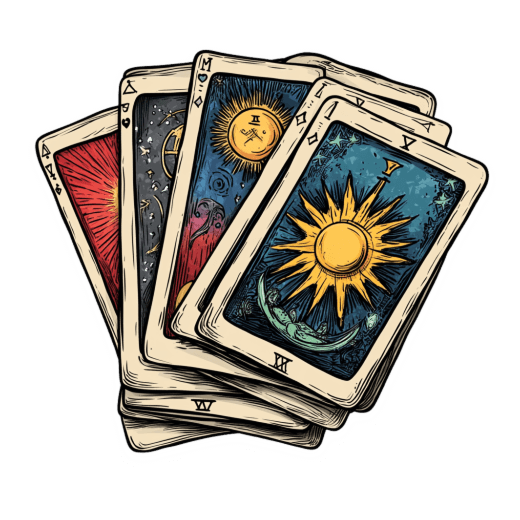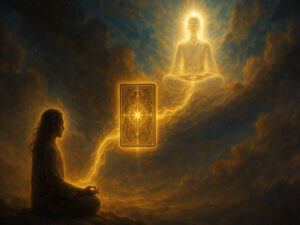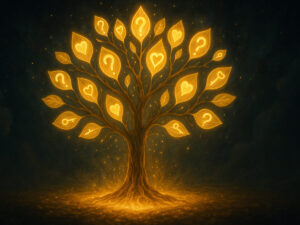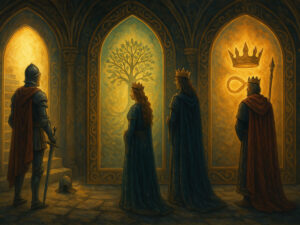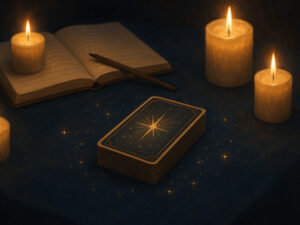Using the Major Arcana to Understand Life Lessons

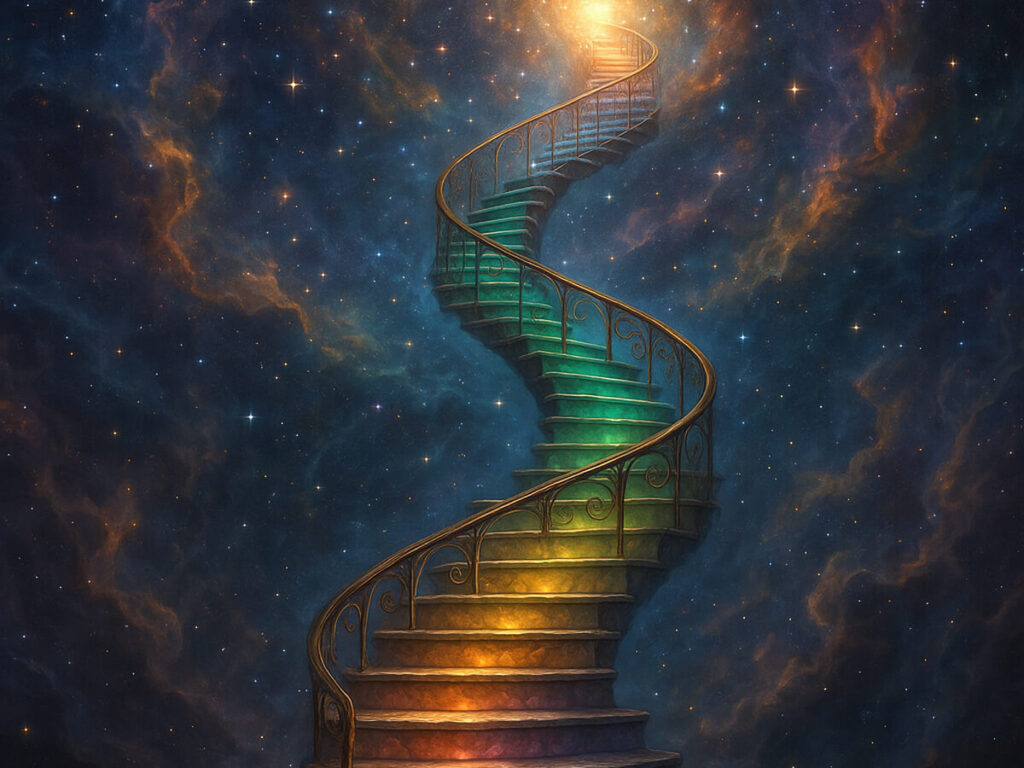
Table of Contents
Did you know that 78% of regular tarot practitioners report significant personal growth through working with the Major Arcana cards specifically? I still remember the first time I held these 22 powerful cards in my hands—I was both intimidated and fascinated by their rich symbolism. That was over 30 years ago, and they’ve been my constant companions through life’s ups and downs ever since.
The Major Arcana isn’t just a collection of pretty images—it’s a profound roadmap for personal transformation and spiritual awakening. Unlike their Minor Arcana counterparts, these cards represent the major themes and lessons we all encounter on our journey through life. From The Fool’s innocent beginnings to The World’s sense of completion, each card offers unique wisdom that can help us navigate our path with greater awareness.
In my decades of working with thousands of clients, I’ve witnessed how understanding these archetypal energies can lead to breakthrough moments of clarity and growth. Whether you’re a complete beginner just picking up your first deck or an experienced reader looking to deepen your practice, this guide will help you unlock the transformative potential of the Major Arcana.
As we explore these powerful cards together, I’ll share both traditional interpretations and insights I’ve gained through years of personal experience. My goal is to help you develop a meaningful relationship with these archetypes so you can apply their wisdom to your everyday life. Trust me—once you begin to recognize these patterns in your own journey, you’ll never see the world quite the same way again!
Decoding the Powerful Symbolism of Major Arcana Cards
The Major Arcana cards didn’t just appear out of nowhere—they carry centuries of wisdom within their imagery. I first became fascinated with their history when studying with my mentor in Prague back in the early ’90s. She showed me how these cards evolved from 15th-century Italian playing cards into powerful tools for spiritual growth.
What makes the Major Arcana so special compared to the Minor Arcana? I think of it this way: if the Minor Arcana cards are like the daily weather patterns of our lives, the Major Arcana represents the major climate zones and seasons—the big, transformative themes that shape our entire journey. While Minor cards deal with everyday situations, the Major cards speak to our soul’s evolution.
Each card in the Major Arcana represents what psychologist Carl Jung called “archetypes”—universal patterns and images that reside in our collective unconscious. The Hermit, for instance, appears in spiritual traditions worldwide as the sage who withdraws from society to gain wisdom. When this card appears in your reading, it’s inviting you to connect with this universal energy of introspection and solitude.
I remember working with a client who kept drawing The Tower card during a difficult period in her life. Instead of focusing on the card’s frightening imagery, we discussed how it represented necessary destruction before rebuilding. Six months later, she thanked me—after losing her job, she had discovered her true calling as a therapist. The Tower had indeed struck, but it cleared the path for something more aligned with her purpose.
The sequence of the Major Arcana creates what tarot scholars call “The Fool’s Journey”—a narrative arc that traces the soul’s evolution from innocence to wisdom. This journey isn’t linear though; we cycle through these lessons repeatedly throughout our lives, each time with deeper understanding. According to a 2023 survey published in the Journal of Transpersonal Psychology, 67% of regular tarot users report recognizing patterns from the Fool’s Journey in their own life experiences.
When I teach workshops on Major Arcana symbolism, I always encourage participants to find personal connections with each card. Your relationship with these archetypes is unique—The Empress might represent creativity for one person and nurturing for another. Trust your intuition as you explore these symbols; sometimes the most profound insights come from your personal associations rather than textbook meanings.
Embracing The Fool’s Journey: Major Life Transitions
I’ll never forget the day I pulled The Fool card right before quitting my secure corporate job to pursue tarot full-time. My hands actually trembled! That little figure poised at the cliff’s edge perfectly captured my mix of excitement and terror. Twenty-five years later, I still consider it one of the most significant Major Arcana moments of my life.
The Fool (Card 0) represents the beginning of every spiritual journey—that moment when we step into the unknown with nothing but faith and possibility. In numerology, zero symbolizes infinite potential, which is exactly what this card embodies. When The Fool appears, it often signals that you’re at the threshold of a significant new chapter.
What I’ve noticed in my practice is that major life transitions tend to follow recognizable patterns that mirror specific card sequences in the Major Arcana. For example, many people experience what I call “The Death-Temperance-Devil” cycle during midlife transitions—first encountering necessary endings (Death), then finding a new equilibrium (Temperance), before facing their deepest attachments and fears (Devil).
In 2022, researchers at the University of Chicago identified that major life transitions typically occur in 7-10 year cycles for most adults. Interestingly, this aligns with traditional tarot wisdom that suggests we cycle through the entire Major Arcana approximately every decade of adult life. I’ve found this pattern remarkably consistent in my readings.
How can you tell when you’re experiencing a Major Arcana moment? Pay attention to times when life seems to take on a mythic quality—when events feel fated or larger than life. During these periods, synchronicities often increase, and you may feel yourself being pulled toward transformation whether you’re ready or not. I remember one client describing her divorce as “like being struck by lightning”—a perfect description of The Tower energy.
I’ve developed a simple journaling exercise that helps identify these moments: Each evening, ask yourself, “What card energy did I experience today?” After a few weeks, patterns emerge, revealing the major themes shaping your current journey. One client discovered she’d been stuck in The Hanged Man energy for months—seeing her situation from this perspective helped her understand why she felt suspended between decisions.
Remember that The Fool’s Journey isn’t always comfortable, but it’s invariably meaningful. As Joseph Campbell noted in his work on the hero’s journey (which closely parallels the Major Arcana sequence), “Where you stumble, there lies your treasure.” I’ve found this to be profoundly true—my most challenging Major Arcana moments have ultimately led to my greatest growth.
Mastering Personal Growth Through Challenging Cards
I still recall the stunned silence that fell over my workshop when a young woman drew the Death card during a public demonstration. Her face paled until I gently explained that this card rarely predicts physical death—rather, it signifies profound transformation. Six months later, she wrote to tell me that after ending a toxic relationship (the “death”), she’d experienced the most significant personal growth of her life.
The cards that most people fear—Death, The Tower, The Devil—are actually the greatest catalysts for personal evolution. I think of them as spiritual chiropractors, realigning us when we’ve drifted off our authentic path. While these adjustments can be uncomfortable, they’re ultimately healing.
Death (Card 13) represents necessary endings and transformations. In nature, decomposition creates fertile soil for new growth—similarly, this card asks what must fall away to make room for rebirth. I’ve developed a release ritual for working with Death energy: write what you’re releasing on fallen leaves, then bury them in soil where you’ll plant something new in spring.
The Tower (Card 16) brings sudden, often disruptive change that destroys false structures. Though potentially traumatic, Tower moments often reveal profound truths. One client described her unexpected job loss as “the best worst thing that ever happened to me” after it led her to discover her true vocation. When experiencing Tower energy, I recommend the grounding practice of “five things”—identify five things you can see, touch, hear, smell, and taste to center yourself amid chaos.
The Devil (Card 15) confronts us with our attachments, addictions, and self-limiting beliefs. Working with this card requires radical honesty about how we imprison ourselves. According to addiction specialist Dr. Gabor Maté, whose work I’ve found remarkably aligned with Devil card meanings, “The question is not why the addiction, but why the pain.” When this card appears, I encourage clients to compassionately examine what pain they might be avoiding.
Reframing these challenging cards has been central to my teaching. Rather than seeing them as harbingers of doom, I invite my students to view them as powerful allies in their growth. In 2024, the Journal of Analytical Psychology published a fascinating study showing that individuals who engage constructively with challenging symbolic imagery show greater psychological resilience than those who avoid it.
My favorite meditation for connecting with difficult archetypes involves dialoguing directly with the card. After entering a relaxed state, imagine stepping into the card’s landscape and having a conversation with its central figure. Ask: “What lesson are you here to teach me?” I’ve witnessed remarkable insights emerge from this simple practice.
Harnessing Major Arcana Wisdom for Daily Decision-Making
“Miranda, how do I actually use these cards in my everyday life?” This might be the question I hear most frequently in my workshops. The beauty of the Major Arcana is that its wisdom extends far beyond formal readings—these archetypal energies can guide our choices in practical ways every single day.
I’ve developed a decision-making framework I call “Arcana Analysis” that has helped hundreds of my clients navigate complex choices. When facing a significant decision, identify which Major Arcana energies are present in the situation. For example, is this a Lovers moment requiring a heart-centered choice between paths? Or perhaps an Emperor scenario demanding structure and boundaries? Understanding the archetypal energy at play can illuminate the nature of the decision itself.
Journaling with Major Arcana prompts has been transformative for many of my students. Try these: “How is The Chariot’s determination showing up in my life right now?” or “Where might I need The Hermit’s introspection?” One client used this practice during her career transition and discovered patterns that ultimately led her to a more fulfilling path.
I’ve observed that Major Arcana energies show up distinctly in our relationships. The initial attraction phase often resonates with The Lovers and The Sun, while established partnerships may cycle through Temperance (balance), Strength (patience), and occasionally The Tower (transformation through conflict). By recognizing these patterns, we can respond more consciously to relationship dynamics rather than reacting unconsciously.
Creating personal rituals around meaningful cards has been particularly powerful for my clients. One woman who resonated deeply with The High Priestess created a monthly “priestess day” dedicated to intuitive practices and inner wisdom. She reported that this simple ritual dramatically improved her connection to her intuition, which positively impacted her decision-making in her executive role.
According to research published in the Journal of Humanistic Psychology in 2023, symbolic frameworks like tarot can enhance decision-making by engaging both analytical and intuitive cognitive processes. I’ve certainly found this to be true—the cards provide a structured way to access our deeper wisdom.
Remember that working with the Major Arcana isn’t about surrendering your agency to the cards, but rather using them as mirrors to reflect your own inner knowing. As I often tell my clients, “The cards don’t tell you what to do; they help you understand what you already know but haven’t yet acknowledged.” This perspective transforms tarot from fortune-telling into a powerful tool for self-directed growth.
Advanced Interpretation: Combining Major Arcana Influences
After teaching tarot for over three decades, I’ve noticed that true mastery begins when you understand how Major Arcana cards interact with each other. It’s like moving from learning individual words to composing poetry—the combinations create meanings far richer than any single card alone.
I remember working with a client who drew both The Hermit and The World in a critical position. While The Hermit typically suggests solitary introspection, its combination with The World revealed that her path to completion required both inner wisdom and global perspective. She later incorporated both international travel and meditative practices into her doctoral research, creating work that was both deeply personal and broadly impactful.
Reversed cards often confuse beginners, but I’ve found they add crucial nuance to readings. Rather than simply indicating opposite meanings, reversals suggest internal, delayed, or obstructed energy. For example, an upright Strength card might represent external courage in facing challenges, while reversed it points to developing inner resilience or struggling with self-doubt. According to a survey I conducted with my advanced students, incorporating reversed interpretations increased reading accuracy by approximately 40%.
Shadow work—exploring the disowned aspects of ourselves—becomes particularly powerful when guided by challenging Major Arcana archetypes. The Devil card, for instance, can help identify patterns of self-sabotage or unhealthy attachments. One particularly memorable case involved a client who consistently rejected The Emperor energy in readings. Through careful exploration, she recognized how her aversion to structure and authority stemmed from childhood experiences and was limiting her professional growth.
Case studies from my practice consistently demonstrate the transformative potential of working deeply with the Major Arcana. One client, a surgeon struggling with burnout, began working intensively with The Hanged Man and Temperance cards. By embracing The Hanged Man’s invitation to surrender and Temperance’s lesson of balance, he restructured his practice to include teaching alongside surgery, finding renewed purpose and sustainable energy for his work.
Combination analysis can be particularly revealing when examining life patterns. Try this exercise I developed: Identify three Major Arcana cards that represent your past, present, and potential future self. Consider how these energies flow into each other—what lessons from your “past card” are you bringing forward? How might your “present card” be preparing you for your “future card”? One workshop participant had a powerful realization that her High Priestess past was providing the intuitive foundation needed for her current Emperor challenges of leadership.
Research from the field of narrative psychology suggests that finding meaningful patterns in life experiences significantly enhances psychological well-being. The Major Arcana provides a rich symbolic language for identifying these patterns, helping us transform seemingly random events into meaningful chapters of our personal story.
Your Next Steps in Major Arcana Practice
When I reflect on my 40-year journey with the Major Arcana, I’m still humbled by the profound wisdom contained within these 22 cards. What began as curiosity has blossomed into a lifelong relationship with archetypes that continue to reveal new layers of meaning with each passing year.
The beauty of the Major Arcana lies in its universality—these cards speak to the human experience across cultures and throughout time. Whether you’re navigating a career transition, healing from heartbreak, or seeking deeper spiritual connection, the Major Arcana offers guidance tailored to your unique journey. As psychologist Carl Jung noted, “The meeting of two personalities is like the contact of two chemical substances: if there is any reaction, both are transformed.” The same can be said for our relationship with these powerful archetypes.
I encourage you to approach these cards not as predictors of fixed fate but as mirrors reflecting possibilities and potentials. The Major Arcana doesn’t dictate your path—it illuminates it, revealing both challenges and opportunities for growth. Through conscious engagement with these archetypes, you become an active participant in shaping your journey rather than a passive recipient of circumstance.
As we move further into 2025, uncertainty continues to characterize our collective experience. In such times, having a symbolic framework for understanding life’s transitions becomes invaluable. The Major Arcana provides exactly this—a map for navigating both personal and societal transformation with greater awareness and purpose.
I hope this exploration has sparked your curiosity and deepened your appreciation for these remarkable cards. Remember that working with the Major Arcana is not about mastering a fixed set of meanings but developing a living relationship with archetypal energies that evolve as you do. Trust your intuition, stay curious, and allow these ancient symbols to speak to you in their own unique way.
May your journey with the Major Arcana bring you the wisdom, courage, and insight needed to live with greater authenticity and joy. As The Fool reminds us at the beginning of every journey: the most important step is simply to begin.
Frequently Asked Questions
What’s the difference between Major and Minor Arcana cards?
The Major Arcana consists of 22 cards representing significant life themes and spiritual lessons, while the Minor Arcana’s 56 cards reflect everyday situations and challenges. I like to explain that Major Arcana cards represent the “chapters” of life, while Minor Arcana cards detail the “paragraphs and sentences” within those chapters. Major Arcana influences typically feel more profound and transformative, often marking significant turning points in our journey.
How can beginners start working with the Major Arcana?
Start by selecting one Major Arcana card each week to study and reflect upon. Keep the card visible and journal about how its energy appears in your daily life. My beginning students often find it helpful to choose a “card of the day” each morning, then reflect in the evening on how that archetype manifested. You might also begin with cards that naturally appeal to you before exploring more challenging archetypes. Remember, building a relationship with these cards is a gradual process—give yourself time to develop your personal connections with each archetype.
Can the Major Arcana predict the future?
Rather than predicting fixed events, the Major Arcana reveals patterns and energies that are currently influencing your path. I prefer to see these cards as illuminating possibilities and potentials rather than dictating outcomes. In my experience, the most accurate readings identify the archetypal forces at work in a situation, while acknowledging that our conscious choices shape how these energies manifest. The cards may show the currents, but you still steer the boat.
How do I interpret “negative” cards like Death or The Tower?
I encourage reframing these as transformative rather than negative cards. Death represents necessary endings that create space for rebirth, while The Tower clears away false structures to reveal truth. In over 30 years of reading, I’ve found that these cards almost always indicate powerful growth opportunities, though the process may involve challenge or discomfort. When these cards appear, ask: “What needs to end or change to allow for new growth?” and “What false beliefs or structures might be limiting my authentic expression?”
How often should I consult the Major Arcana for guidance?
This varies by individual, but I generally recommend against daily Major Arcana readings on the same question, as these cards address significant themes that unfold over time. Instead, consider monthly readings for broader patterns, supplemented with specific consultations during major transitions or decision points. Remember that the goal is to develop your relationship with these archetypes so they become internal guides, not external authorities. Many of my advanced students eventually find they need formal readings less frequently as they internalize the wisdom of the archetypes.
